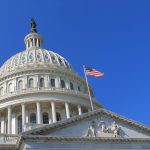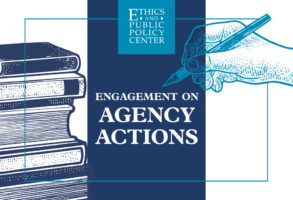Published May 20, 2014
Healthcare reform has largely ignored the poor. The healthcare safety net has far too many holes, and the Affordable Care Act builds on a flawed system of health insurance. Lower income families, especially those enrolled in Medicaid, have a difficult time finding doctors who will accept their coverage. Insurance is of little value if doctors will not work with your insurer.
About one-third of physicians refuse to see new Medicaid patients. Referrals to specialists are especially difficult. In Washington State primary care physicians had 75 percent more problems obtaining a specialty referral for Medicaid patients than for those with commercial coverage.
States buy health services for the poor, but at less-than-market prices. According to the government’s health actuaries, Medicaid pays about 60 percent of what private insurers pay for medical care. Who can blame physicians for avoiding this kind of insurance?
It’s not just the privately insured that make better customers for physicians. Incredibly, three-quarters of all physicians received higher reimbursement rates from their uninsured patients paying out-of-pocket than from Medicaid. With fewer doctors and hospitals willing to take care of Medicaid patients, access to timely and high quality care is often compromised.
For those lower income Americans seeking subsidized coverage on the ACA’s exchanges, the story is similar. While the exchanges offer a choice of coverage, the options are dominated by “narrow network plans” that look suspiciously like Medicaid coverage. Many participants are only now discovering that their access to top physicians and hospitals is limited. In the Houston area, the renowned MD Anderson Cancer Center participates in fewer than half of the available ACA plans.
The expanded health programs have a serious catch: big tax increases on the working poor. Families who work longer hours or take higher paying jobs will have higher incomes but the extra earnings mean lower health insurance subsidies. A bigger salary therefore translates into a higher health insurance premium.
According to the Congressional Budget Office (CBO), a family of four would face an additional 13 percent implicit tax from the ACA if it raised its income from $35,300 to $47,100. Combined with an expected increase in income and payroll taxes, and the loss of other government assistance such as food stamps, many families could see their total tax rates rise to well above 50 percent. The workforce will shrink by 2.5 million Americans over the next ten years because of the work disincentives created by the ACA.
Work is the essential ingredient in improving the lives of the poor and near-poor. What’s needed is a plan that gives the poor access to care that is comparable to what the middle class receives without needlessly discouraging the poor from working to join the middle class themselves.
First, there should be a universal tax credit for any household without access to employer-financed insurance, including Medicaid participants. This subsidy should be sufficient to ensure that all Americans can purchase private insurance protection against large medical expenses.
Second, states must have the flexibility to use Medicaid’s resources more effectively. Medicaid should be converted into premium support for insurance, and participants should be able to select their own insurance plan—including an employer plan, if one is available.
The goal is to allow beneficiaries to choose a health insurance plan that they—not some policy expert or public health official—find most attractive. The very poor would get help, through premium support, to ensure essentially free health care, with higher-income beneficiaries contributing more to the cost of the program. This approach ensures competition and responsiveness to actual consumer needs and preferences—and higher enrollment as families would find options more suited to their needs.
As part of the reform, states could test new approaches to serving low income Americans. For instance, states could implement a health savings account model, which has been used in Indiana to expand insurance enrollment. Beneficiary-owned accounts used to pay deductibles and copayments would be seeded with government money. This approach has proven popular with participants even as it promotes prudent use of services.
The third step is to invest in better health clinics to catch those who fall between the cracks. Instead of relying on the existing public model, a new approach should rely on competitive bidding to select the most cost-effective approaches for improving the health status of poor households.
Providing a secure and accessible health system for the poor will not occur without some public expense, and will require additional discipline elsewhere in the budget. But that should not be an excuse for failing to reform a dysfunctional system.
The debate over health care is not over. The public is not satisfied with the status quo, and reform is still necessary, especially to improve care for the poor.. Now is the time to present a better way forward.
James C. Capretta is a senior fellow at the Ethics and Public Policy Center and a visiting fellow at the American Enterprise Institute.
Joseph R. Antos, Ph.D. is the Wilson H. Taylor scholar in healthcare and retirement policy at the American Enterprise Institute.
Robert Doar is the Morgridge fellow in poverty studies at the American Enterprise Institute.
Mark Pauly, Ph.D. is the Bendheim professor of economics at the Wharton School at the University of Pennsylvania.








